Balkinization
an unanticipated consequence of
Jack M. Balkin
Balkinization Symposiums: A Continuing List
E-mail:
Jack Balkin:
jackbalkin at yahoo.com
Bruce Ackerman
bruce.ackerman at yale.edu
Ian Ayres
ian.ayres at yale.edu
Corey Brettschneider
corey_brettschneider at brown.edu
Mary Dudziak
mary.l.dudziak at emory.edu
Joey Fishkin
joey.fishkin at gmail.com
Heather Gerken heather.gerken at yale.edu
Abbe Gluck abbe.gluck at yale.edu
Mark Graber
mgraber at law.umaryland.edu
Stephen Griffin
sgriffin at tulane.edu
Jonathan Hafetz
jonathan.hafetz at shu.edu
Jeremy Kessler
jkessler at law.columbia.edu
Andrew Koppelman
akoppelman at law.northwestern.edu
Marty Lederman
msl46 at law.georgetown.edu
Sanford Levinson
slevinson at law.utexas.edu
David Luban
david.luban at gmail.com
Gerard Magliocca
gmaglioc at iupui.edu
Jason Mazzone
mazzonej at illinois.edu
Linda McClain
lmcclain at bu.edu
John Mikhail
mikhail at law.georgetown.edu
Frank Pasquale
pasquale.frank at gmail.com
Nate Persily
npersily at gmail.com
Michael Stokes Paulsen
michaelstokespaulsen at gmail.com
Deborah Pearlstein
dpearlst at yu.edu
Rick Pildes
rick.pildes at nyu.edu
David Pozen
dpozen at law.columbia.edu
Richard Primus
raprimus at umich.edu
K. Sabeel Rahmansabeel.rahman at brooklaw.edu
Alice Ristroph
alice.ristroph at shu.edu
Neil Siegel
siegel at law.duke.edu
David Super
david.super at law.georgetown.edu
Brian Tamanaha
btamanaha at wulaw.wustl.edu
Nelson Tebbe
nelson.tebbe at brooklaw.edu
Mark Tushnet
mtushnet at law.harvard.edu
Adam Winkler
winkler at ucla.edu
Compendium of posts on Hobby Lobby and related cases
The Anti-Torture Memos: Balkinization Posts on Torture, Interrogation, Detention, War Powers, and OLC
The Anti-Torture Memos (arranged by topic)
Recent Posts
Racial Innocence: Latino Bias, Reality Construction and the Epistemology of Ignorance
Just A Few Blogs
ACS Blog
Alas, a Blog
Althouse
Arts and Letters Daily
Atrios (Eschaton)
Bill of Health
Buzzflash.com
Buzz Machine
Cato at Liberty
Juan Cole (Informed Comment)
Concurring Opinions
The Constitution in 2020
Corrente
Crooked Timber
Daily Howler
Daily Kos
Dana Boyd
Brad DeLong
Digby (Hullabaloo)
Discriminations
Daniel Drezner
Kevin Drum (Mother Jones)
Electrolite
En Banc
Eunomia (Daniel Larison)
Fafblog
Michael Froomkin (Discourse.net)
GovLab (Beth Noveck)
Rick Hasen (Election Law)
History News Network
How Appealing
Ignatz (Sam Heldman)
The Importance of (Ernie Miller)
Infolaw
Instapundit
International Economic Law and Policy Blog
IntLawGrrls
Jacob Levy
Jesus' General
Jurisdynamics
The Kitchen Cabinet
Mark Kleiman
Law Blog Central
Larry Lessig
Lawyers, Guns and Money
Liberal Oasis
Brian Leiter's Law School Reports
The Leiter Reports
Marginal Revolution
Megan McArdle
Memeorandum
Metafilter
Mirror of Justice
The New Republic
Newseum
No More Mister Nice Blog
Brendan Nyhan
Opinio Juris
Orcinus
The Originalism Blog
Pandagon
Passport (Foreign Policy)
Overcoming Bias
Political Animal (Washington Monthly)
Political Theory Daily Review
Political Wire (Taegan Goddard)
The Poor Man
Virginia Postrel
Prawfsblawg
Public Reason
Jonathan Rauch
Raw Story
Redstate
ReligiousLeftLaw.com
Reporters Committee For Freedom of the Press
Reproductive Rights Blog
Rothman's Roadmap to the Right of Publicity
SCOTUS Blog
Seeing the Forest
Clay Shirky
The Shifted Librarian
The Situationist
Larry Solum (Legal Theory)
Andrew Sullivan
Talking Points Memo
Talk Left
Tapped
Tbogg
TechPresident
The Paper Chase (Jurist)
Tom Paine
Tom Tomorrow (This Modern World)
Eve Tushnet
Uggabugga
University of Chicago Law School Faculty Blog
Unqualified Offerings
The Volokh Conspiracy
War and Piece (Laura Rozen)
Wampum
Oliver Willis
Wonkette
Written Description
Matthew Yglesias
Yin
Your Choice of Feeds
1. XML
powered by
2. Atom Feed
3. RSS 2.0
Wednesday, December 07, 2022
Racial Innocence: Latino Bias, Reality Construction and the Epistemology of Ignorance
Guest Blogger
For the Balkinization symposium on Tanya K. Hernández, Racial Innocence: Unmasking Latino Anti-Black Bias and the Struggle for Equality (Beacon Press, 2022). George A. Martinez.[1] Professor Tanya Katerí Hernández’s
book Racial Innocence: Unmasking Latino Anti-Black Bias and the Struggle for
Equality[2],
is a very important contribution to the literature on race and the law. Professor
Hernández observes that many do not believe that Latinos can be racist or
biased against blacks.[3] In
the face of such skepticism, Professor Hernández seeks to demonstrate the
existence of Latino racism against Afro-Latinos and African-Americans.[4]
Toward this end, Professor Hernández sets out the stories and experiences of
Afro-Latinos and African-Americans who have suffered from Latino Anti-black racism.[5] In
this essay, I argue that (1) Professor Hernández’s work can be placed in a
tradition of scholars and civil rights activists who have sought to establish
the existence of certain forms of racism and have dismantled claims that such
racism does not exist through a methodology that can be characterized as
“reality construction” and (2) Professor Hernández’s work provides evidence of
what philosophers have called an epistemology of ignorance at work in law which
allows Latinos to subordinate African-Americans and Afro-Latinos. In particular, Professor Hernández
uses “legal case stories” to show the existence of Latino anti-black racial
discrimination.[6]
She thinks law is a powerful tool to demonstrate the existence of such racism
because law has developed special techniques and methodologies to expose the
existence of racism.[7]
She provides legal case stories that are powerful and compelling. For example,
she describes Latino anti-black racism in the contexts of public accommodations
such as national restaurant chains,[8]
retail clothing stores,[9]
and convenience stores.[10]
Similarly, she sets out numerous convincing legal stories of such anti-black
bias in the educational domain,[11]
in the employment context,[12]
in the area of housing,[13]
and in Latino violence against blacks.[14] In
summary, Professor Hernández persuasively argues that Latinos can be racist
against Afro-Latinos and African Americans. At the outset, Professor Hernández’s
project is part of a tradition of scholars and activists who have sought to
establish the existence of racism in the face of skepticism that particular
sorts of racism exist. For example, W.E.B. DuBois and Alonso S. Perales
undertook similar projects in their eras. In 1899, DuBois published The
Philadelphia Negro.[15]
In this book, DuBois observed that African-Americans of the time saw racism as
the primary factor operating to subordinate African-Americans in various facets
of life. Indeed, the African-Americans saw racism as preventing
African-Americans from being recognized as a man.[16] Despite this, DuBois observed that most
whites in Philadelphia failed to see racism as a cause of problems for
African-Americans.[17] And, indeed, in DuBois’s view most whites in
Philadelphia would say that racism against blacks did not exist.[18]
In an effort to counter these claims, DuBois, in the Philadelphia Negro
set out to prove the existence of racism against African-Americans. He did this
by describing “actual cases” to demonstrate the existence of racism against
blacks. Thus, he described racial discrimination against blacks in various contexts,
including employment and housing.[19] Similarly, civil rights activist
Alonso S. Perales, in his 1948 work, Are We Good Neighbors?,[20]
also dealt with claims that racism was not operating against Mexican-Americans
in his era.[21]
In his book, Perales set out to provide evidence of various forms of racial
discrimination against Mexican-Americans, including in employment and public
accommodations.[22]
He also produced evidence of segregation in public schools and housing.[23]
Significantly, he sought to prove this discrimination in large part through the
use of 70 pages of sworn affidavits executed by Mexican-Americans testifying to
many incidents of racism against Mexican-Americans.[24]
Perales intended to use this evidence to persuade lawmakers to enact
legislation to outlaw discrimination against Mexican-Americans.[25] Professor Hernández’s project
like those of DuBois and Perales, is an excellent example of what critical
theorists recognize as “reality construction.” “Reality [is] a social
construction.”[26]
In order to empower themselves, racial minorities must dismantle the
“officially … accepted reality.[27]
In its place, minority groups must substitute “a more accurate account of
reality” by describing their experiences of being oppressed which “invalidates
the culture of white… supremacy” which is “the socially constructed reality (of
the oppressor).”[28]
In light of this process, we can understand Professor Hernández’s project as
deconstructing the officially accepted view that Latinos cannot be racist
against Afro-Latinos and African-Americans. By describing the Afro-Latino and
African-Americans stories of oppression by Latinos, Professor Hernández has substituted
a more accurate picture of reality in which Latinos are unmasked and revealed
as practicing racial discrimination against Afro-Latinos and African-Americans. The legal cases that Professor Hernández
identifies, also reveal the existence of an epistemology of ignorance which operates
in law to allow Latinos to subordinate blacks. In this regard, philosophers and
other theorists have shown how an epistemology of ignorance or the production
of ignorance can be employed to subordinate racial minorities.[29]
For example, Charles Mills contends that there is a “Racial Contract” that
regulates racial relations in society.[30] According to Mills, this agreement has an
epistemological component that requires the dominant group to “engage in a
significant degree of misunderstanding, misinterpretation and
misrepresentation” regarding racial issues.[31] The
production of such ignorance allows a particular group or race to occupy a
socially superior position with respect to other races or groups.[32] In this regard, Professor Hernández’s
stories provide evidence of the production of ignorance which helps Latinos
maintain a socially dominant position over Afro-Latinos and African-Americans.
For instance, one judge misinterpreted the world when he presumed that Latino
coworkers and supervisors could not be racist.[33]
Similarly, in another case the Latino defendant misrepresented or misunderstood
the nature of things when he asserted as a defense that he could not be biased
against African-Americans since he was a Latino who had experienced racism
directed against him because of his Latino background.[34]
Indeed, the Latino innocence defense seems to be a common misrepresentation of
reality as the stories also show a landlord arguing that she could not be
biased because she was Latina and a man who defended against charges of
engaging in racial violence against an African-American by asserting that he
could not be racist because he was Puerto Rican.[35] Professor Hernández’s book, Racial
Innocence, is a pioneering effort which persuasively argues that Latinos
can be biased against Afro-Latinos and African-Americans. As such, the book
constitutes a very important contribution to the literature on race and the
law. The book constitutes an excellent example of reality construction and
shows the existence of an epistemology of ignorance which operates to allow
Latinos to subordinate Afro-Latinos and African-Americans. [1] Professor
of Law, Southern Methodist University, gmartine@smu.edu. [2] Tanya Katerí Hernández, Racial Innocence
(Beacon Press 2022). [3] Id.
at 2-3. [4] Id.
at 3. [5] Id.
at 3. [6] Id.
at 10. [7] Id.
at 10. [8] Id.
at 38. [9] Id.
at 41. [10] Id.
at 41. [11] Id.
at 46-55. [12] Id.
at 66-85. [13] Id.
at 86-104. [14] Id.
at 102-119. [15] W.e.b. DuBois, The Philadelphia Negro
(1899). [16] Id.
at 322. [17] Id.
at 322. [18] Id.
at 121. [19] Id.
at 327-332; 350. [20] Alonso S. Perales, Are We Good Neighbors?
(1948). [21] Id.
at 8. [22] Id.
at 58. [23] Id.
at 121. [24] Id.
at 139-213. [25] Id.
at 9. [26] Joaquin
De La Torre-Mac Neill, Consciousness Raising and Reality Construction Within
Opressed Groups: Bridging the Gap Between Feminist Theory and Critical Race
Theory, 2 Res Cogitans 29
(2011). [27] Id.
at 29. [28] Id.
at 31-32. [29] See,
e.g., Charles Mills, The Racial Contract
(Cornell University Press, 1997). [30] See
id. [31] Rebecca
Mason, Two Kinds of Unknowing, 26 Hypatia
294-307, 302 (2011). [32] See
Mason, supra note 31, at 302. [33] Hernández, supra note 2 at 67. [34] Id.
at 78. [35] Id.
at 99, 102.
Posted
11:00 AM
by Guest Blogger [link]
Books by Balkinization Bloggers

Linda C. McClain and Aziza Ahmed, The Routledge Companion to Gender and COVID-19 (Routledge, 2024)

David Pozen, The Constitution of the War on Drugs (Oxford University Press, 2024)

Jack M. Balkin, Memory and Authority: The Uses of History in Constitutional Interpretation (Yale University Press, 2024)
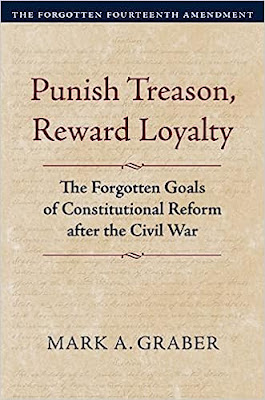
Mark A. Graber, Punish Treason, Reward Loyalty: The Forgotten Goals of Constitutional Reform after the Civil War (University of Kansas Press, 2023)
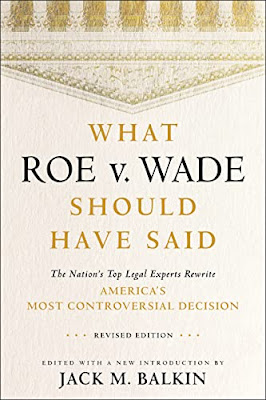
Jack M. Balkin, What Roe v. Wade Should Have Said: The Nation's Top Legal Experts Rewrite America's Most Controversial Decision - Revised Edition (NYU Press, 2023)

Andrew Koppelman, Burning Down the House: How Libertarian Philosophy Was Corrupted by Delusion and Greed (St. Martin’s Press, 2022)

Gerard N. Magliocca, Washington's Heir: The Life of Justice Bushrod Washington (Oxford University Press, 2022)
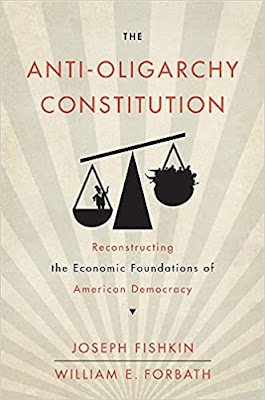
Joseph Fishkin and William E. Forbath, The Anti-Oligarchy Constitution: Reconstructing the Economic Foundations of American Democracy (Harvard University Press, 2022)
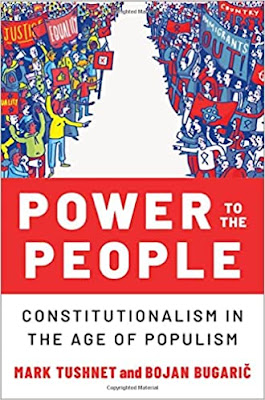
Mark Tushnet and Bojan Bugaric, Power to the People: Constitutionalism in the Age of Populism (Oxford University Press 2021).

Mark Philip Bradley and Mary L. Dudziak, eds., Making the Forever War: Marilyn B. Young on the Culture and Politics of American Militarism Culture and Politics in the Cold War and Beyond (University of Massachusetts Press, 2021).

Jack M. Balkin, What Obergefell v. Hodges Should Have Said: The Nation's Top Legal Experts Rewrite America's Same-Sex Marriage Decision (Yale University Press, 2020)

Frank Pasquale, New Laws of Robotics: Defending Human Expertise in the Age of AI (Belknap Press, 2020)

Jack M. Balkin, The Cycles of Constitutional Time (Oxford University Press, 2020)

Mark Tushnet, Taking Back the Constitution: Activist Judges and the Next Age of American Law (Yale University Press 2020).

Andrew Koppelman, Gay Rights vs. Religious Liberty?: The Unnecessary Conflict (Oxford University Press, 2020)

Ezekiel J Emanuel and Abbe R. Gluck, The Trillion Dollar Revolution: How the Affordable Care Act Transformed Politics, Law, and Health Care in America (PublicAffairs, 2020)

Linda C. McClain, Who's the Bigot?: Learning from Conflicts over Marriage and Civil Rights Law (Oxford University Press, 2020)
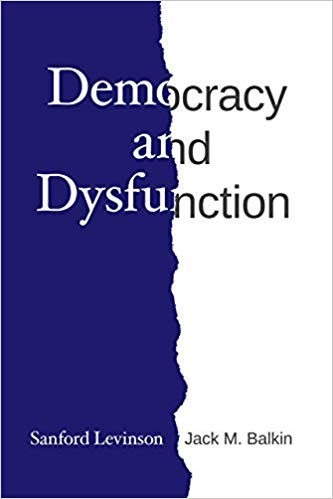
Sanford Levinson and Jack M. Balkin, Democracy and Dysfunction (University of Chicago Press, 2019)

Sanford Levinson, Written in Stone: Public Monuments in Changing Societies (Duke University Press 2018)

Mark A. Graber, Sanford Levinson, and Mark Tushnet, eds., Constitutional Democracy in Crisis? (Oxford University Press 2018)

Gerard Magliocca, The Heart of the Constitution: How the Bill of Rights became the Bill of Rights (Oxford University Press, 2018)

Cynthia Levinson and Sanford Levinson, Fault Lines in the Constitution: The Framers, Their Fights, and the Flaws that Affect Us Today (Peachtree Publishers, 2017)

Brian Z. Tamanaha, A Realistic Theory of Law (Cambridge University Press 2017)

Sanford Levinson, Nullification and Secession in Modern Constitutional Thought (University Press of Kansas 2016)

Sanford Levinson, An Argument Open to All: Reading The Federalist in the 21st Century (Yale University Press 2015)

Stephen M. Griffin, Broken Trust: Dysfunctional Government and Constitutional Reform (University Press of Kansas, 2015)

Frank Pasquale, The Black Box Society: The Secret Algorithms That Control Money and Information (Harvard University Press, 2015)

Bruce Ackerman, We the People, Volume 3: The Civil Rights Revolution (Harvard University Press, 2014)
Balkinization Symposium on We the People, Volume 3: The Civil Rights Revolution

Joseph Fishkin, Bottlenecks: A New Theory of Equal Opportunity (Oxford University Press, 2014)

Mark A. Graber, A New Introduction to American Constitutionalism (Oxford University Press, 2013)

John Mikhail, Elements of Moral Cognition: Rawls' Linguistic Analogy and the Cognitive Science of Moral and Legal Judgment (Cambridge University Press, 2013)

Gerard N. Magliocca, American Founding Son: John Bingham and the Invention of the Fourteenth Amendment (New York University Press, 2013)

Stephen M. Griffin, Long Wars and the Constitution (Harvard University Press, 2013)

Andrew Koppelman, The Tough Luck Constitution and the Assault on Health Care Reform (Oxford University Press, 2013)

James E. Fleming and Linda C. McClain, Ordered Liberty: Rights, Responsibilities, and Virtues (Harvard University Press, 2013)
Balkinization Symposium on Ordered Liberty: Rights, Responsibilities, and Virtues

Andrew Koppelman, Defending American Religious Neutrality (Harvard University Press, 2013)

Brian Z. Tamanaha, Failing Law Schools (University of Chicago Press, 2012)

Sanford Levinson, Framed: America's 51 Constitutions and the Crisis of Governance (Oxford University Press, 2012)

Linda C. McClain and Joanna L. Grossman, Gender Equality: Dimensions of Women's Equal Citizenship (Cambridge University Press, 2012)

Mary Dudziak, War Time: An Idea, Its History, Its Consequences (Oxford University Press, 2012)

Jack M. Balkin, Living Originalism (Harvard University Press, 2011)

Jason Mazzone, Copyfraud and Other Abuses of Intellectual Property Law (Stanford University Press, 2011)

Richard W. Garnett and Andrew Koppelman, First Amendment Stories, (Foundation Press 2011)

Jack M. Balkin, Constitutional Redemption: Political Faith in an Unjust World (Harvard University Press, 2011)

Gerard Magliocca, The Tragedy of William Jennings Bryan: Constitutional Law and the Politics of Backlash (Yale University Press, 2011)

Bernard Harcourt, The Illusion of Free Markets: Punishment and the Myth of Natural Order (Harvard University Press, 2010)

Bruce Ackerman, The Decline and Fall of the American Republic (Harvard University Press, 2010)
Balkinization Symposium on The Decline and Fall of the American Republic

Ian Ayres. Carrots and Sticks: Unlock the Power of Incentives to Get Things Done (Bantam Books, 2010)

Mark Tushnet, Why the Constitution Matters (Yale University Press 2010)
Ian Ayres and Barry Nalebuff: Lifecycle Investing: A New, Safe, and Audacious Way to Improve the Performance of Your Retirement Portfolio (Basic Books, 2010)
.jpg)
Jack M. Balkin, The Laws of Change: I Ching and the Philosophy of Life (2d Edition, Sybil Creek Press 2009)

Brian Z. Tamanaha, Beyond the Formalist-Realist Divide: The Role of Politics in Judging (Princeton University Press 2009)
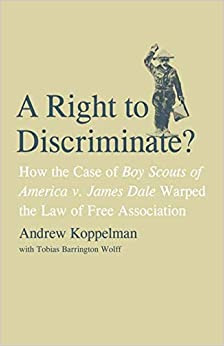
Andrew Koppelman and Tobias Barrington Wolff, A Right to Discriminate?: How the Case of Boy Scouts of America v. James Dale Warped the Law of Free Association (Yale University Press 2009)

Jack M. Balkin and Reva B. Siegel, The Constitution in 2020 (Oxford University Press 2009)
Heather K. Gerken, The Democracy Index: Why Our Election System Is Failing and How to Fix It (Princeton University Press 2009)

Mary Dudziak, Exporting American Dreams: Thurgood Marshall's African Journey (Oxford University Press 2008)

David Luban, Legal Ethics and Human Dignity (Cambridge Univ. Press 2007)

Ian Ayres, Super Crunchers: Why Thinking-By-Numbers is the New Way to be Smart (Bantam 2007)

Jack M. Balkin, James Grimmelmann, Eddan Katz, Nimrod Kozlovski, Shlomit Wagman and Tal Zarsky, eds., Cybercrime: Digital Cops in a Networked Environment (N.Y.U. Press 2007)
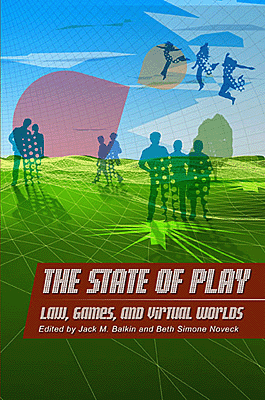
Jack M. Balkin and Beth Simone Noveck, The State of Play: Law, Games, and Virtual Worlds (N.Y.U. Press 2006)

Andrew Koppelman, Same Sex, Different States: When Same-Sex Marriages Cross State Lines (Yale University Press 2006)
Brian Tamanaha, Law as a Means to an End (Cambridge University Press 2006)
Sanford Levinson, Our Undemocratic Constitution (Oxford University Press 2006)
Mark Graber, Dred Scott and the Problem of Constitutional Evil (Cambridge University Press 2006)
Jack M. Balkin, ed., What Roe v. Wade Should Have Said (N.Y.U. Press 2005)
Sanford Levinson, ed., Torture: A Collection (Oxford University Press 2004)
Balkin.com homepage
Bibliography
Conlaw.net
Cultural Software
Writings
Opeds
The Information Society Project
BrownvBoard.com
Useful Links
Syllabi and Exams